
Creating a Sense of Belonging For your Employees
Were you ever the “new kid?”
Any of us who moved in elementary school know exactly what that feels like. You are coming into a new situation where everyone else already has friends, knows where the bathrooms are, and knows which teachers are nice and which are mean.
That first lunch period can be terrifying. Everyone else seems to be at home and you are the outsider. This situation causes many of us physical pain in the pit of our stomach. Each of us has a deep human desire to belong.
That feeling as a child is the same feeling as starting a new job as an adult. All your new coworkers know the culture, know who is nice and who is cranky, and — yes, know where the bathrooms are.
Belonging is more than just knowing the office layout. It is when everyone on your team feels included in the culture. Everyone is pulling the same direction, everyone’s opinions are valued, no one is on the outside looking in.
Unfortunately, having belonging at the workplace is becoming rare. A study by the Harvard Business Review found 40% of employees feel isolated at work, and that research was done before the pandemic. The subsequent rise in remote work will only make the problem worse.
Fostering a sense of belonging is not only a good way to make a great workplace, it also will boost productivity. To quote the HBR research, “High belonging was linked to a whopping 56% increase in job performance, a 50% drop in turnover risk, and a 75% reduction in sick days. For a 10,000-person company, this would result in annual savings of more than $52M.”
Belonging Starts with Physical Space
The first step to creating a sense of belonging starts with physical space. This could either be the office itself, for companies where in-person work has resumed, or if the company is still remote, then the virtual space.
For in-person settings, you want to stick to an open-floor plan to promote mingling and connection between employees. It is crucial to provide spaces for collaboration. A common area with comfortable furniture and good coffee would be perfect and encourage employees to connect.
For virtual settings the space has to be created differently. Encourage connection with video chat platforms like Zoom or Google Meet. One way to make the virtual office feel more welcoming is to use video meetings to talk casually, not just to hold meetings.
Make Your Culture Welcoming
The company’s culture is the most important part of creating a sense of belonging. People should feel at home and comfortable with their coworkers. This doesn’t mean that everyone has to hang out on the weekends, but it does mean that everyone should be approachable and open to feedback. The first time a new employee speaks up and has their opinion shot down will give them that “new kid” pit in their stomach just like elementary school.
Company traditions are another key element that can either foster belonging or isolate people. Throwing a big holiday party might seem like a fun idea, but remember that not all your employees might celebrate the same holidays. That does not mean you shouldn’t still have a fun party, but just make sure the party includes everyone and doesn’t isolate a subset of your employee base.
At Whistle, one of the things we believe in is the democratization of culture budgets. Rather than having one or a few people decide culture for everyone, distribute a cash budget down the org chart. Let the managers who know employees personally decide the best way to spend the culture dollars.
It All Depends on People the Top
Leadership set the culture tone for the whole company. Leaders should be approachable and open to conversation. A great way to do this is to have open Q&A sessions with senior leadership.
If your company does have activities like ice breakers, game nights, or happy hours, the company’s leaders should attend and participate. In addition to all the other hats they wear for the company, it is also important for them to be the social mixer who talks to the wallflowers and gets them involved in the company activity. Don’t let the new person eat lunch by themselves.
In many ways, the company leaders are like micro-celebrities. If there is an employee who is being treated like an outsider, a leader can go out of their way to include that person or give them a shout-out at the company meeting. That simple act will spread across the organization.
Conclusion
Creating a sense of belonging for your employees is not easy, but it is important if you want to retain top talent and inspire your team. Start with the physical space, create a culture that is open to everyone, and make sure your leaders are walking the walk. Belonging can have a major impact on company productivity and it is worth the effort to make it a priority.
WHISTLE, THE EMPLOYEE LOYALTY APP
There are many factors that influence employee loyalty but Whistle is the first employee loyalty app specifically designed for that purpose. By leveraging Whistle and integrating with other programs, Whistle can help companies improve both their top and bottom line.
In a recent case study, Whistle helped a manufacturing company reduce turnover by 26% in just 90 days through a redesigned onboarding program. Whistle’s employee loyalty app brought the company’s on-boarding process into the digital age and put it in every employee’s pocket. Employees raved about the mobile-first experience and cash reward system.
Companies are using Whistle to help people-managers improve relationships with their direct reports, rethinking incentives and rewards, and even changing their approach to culture – building a more inclusive workplace and helping to attract quality candidates.
Contact us for a free demo and better understand how much you can improve employee loyalty when using an employee loyalty app!
Forget the Bells. You Just Need Whistle.
Overwhelmed? Let us help you build a better onboarding experience, improve leadership training, or find innovative ways to appreciate your people — start by speaking to a consultant for free.
Additional posts you might find interesting
 /wp-content/uploads/2025/07/FI-AI-in-construction-July-2025.png 780 940 Chris Dornfeld /wp-content/uploads/2024/12/Dk-Blue-Whistle-Rewards-Logo-with-Text-300x110.png Chris Dornfeld2025-07-15 15:20:192025-07-15 15:20:19AI in Safety: Predicting and Preventing Hazards Before They Happen
/wp-content/uploads/2025/07/FI-AI-in-construction-July-2025.png 780 940 Chris Dornfeld /wp-content/uploads/2024/12/Dk-Blue-Whistle-Rewards-Logo-with-Text-300x110.png Chris Dornfeld2025-07-15 15:20:192025-07-15 15:20:19AI in Safety: Predicting and Preventing Hazards Before They Happen /wp-content/uploads/2025/04/FI-Haugland-Group-Case-Study.png 780 940 Chris Dornfeld /wp-content/uploads/2024/12/Dk-Blue-Whistle-Rewards-Logo-with-Text-300x110.png Chris Dornfeld2025-04-30 20:53:522025-04-30 20:53:52Haugland Improves Procore Use by 200%
/wp-content/uploads/2025/04/FI-Haugland-Group-Case-Study.png 780 940 Chris Dornfeld /wp-content/uploads/2024/12/Dk-Blue-Whistle-Rewards-Logo-with-Text-300x110.png Chris Dornfeld2025-04-30 20:53:522025-04-30 20:53:52Haugland Improves Procore Use by 200%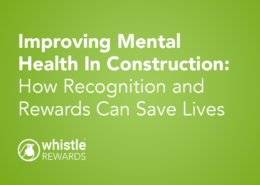
Improving Mental Health in Construction: How Recognition and Rewards Can Save Lives
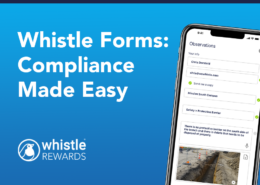 /wp-content/uploads/2025/04/FI-Whistle-Forms.png 780 940 Chris Dornfeld /wp-content/uploads/2024/12/Dk-Blue-Whistle-Rewards-Logo-with-Text-300x110.png Chris Dornfeld2025-04-28 17:58:512025-04-28 17:58:51Whistle Forms: Compliance Made Easy
/wp-content/uploads/2025/04/FI-Whistle-Forms.png 780 940 Chris Dornfeld /wp-content/uploads/2024/12/Dk-Blue-Whistle-Rewards-Logo-with-Text-300x110.png Chris Dornfeld2025-04-28 17:58:512025-04-28 17:58:51Whistle Forms: Compliance Made Easy
5 Ways Safety Leaders Can Boost Employee Retention

Company Merchandise Stores
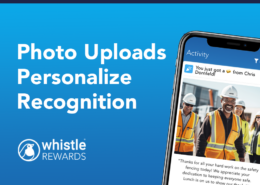 /wp-content/uploads/2025/01/FI-Photo-Uploads-for-Recognition.png 780 940 Chris Dornfeld /wp-content/uploads/2024/12/Dk-Blue-Whistle-Rewards-Logo-with-Text-300x110.png Chris Dornfeld2025-01-12 21:53:032025-03-05 00:33:30Whistle Rewards Launches New Photo Uploads Feature
/wp-content/uploads/2025/01/FI-Photo-Uploads-for-Recognition.png 780 940 Chris Dornfeld /wp-content/uploads/2024/12/Dk-Blue-Whistle-Rewards-Logo-with-Text-300x110.png Chris Dornfeld2025-01-12 21:53:032025-03-05 00:33:30Whistle Rewards Launches New Photo Uploads Feature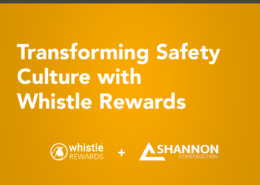
Transforming Safety Culture with Whistle Rewards
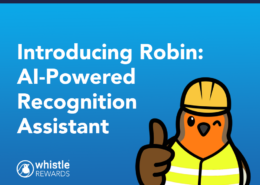 /wp-content/uploads/2024/12/FI-AI-powered-recognition.png 780 940 Chris Dornfeld /wp-content/uploads/2024/12/Dk-Blue-Whistle-Rewards-Logo-with-Text-300x110.png Chris Dornfeld2024-12-12 19:07:322024-12-12 19:40:44Whistle Rewards’ New AI-Powered Recognition Assistant
/wp-content/uploads/2024/12/FI-AI-powered-recognition.png 780 940 Chris Dornfeld /wp-content/uploads/2024/12/Dk-Blue-Whistle-Rewards-Logo-with-Text-300x110.png Chris Dornfeld2024-12-12 19:07:322024-12-12 19:40:44Whistle Rewards’ New AI-Powered Recognition Assistant
Why Rewards Work So Well with Project Management Tools in Construction

23% of construction companies plan to add more monetary rewards in 2025
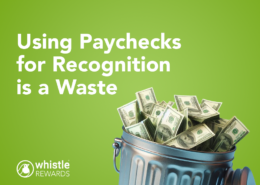
Using Paychecks for Recognition is a Waste

How Technology Will Reshape the Construction Workforce in the Next Five Years

Shannon Construction increases Daily Log reporting in Procore by 863%!
 /wp-content/uploads/2024/10/FI-Use-QR-codes-to-easily-send-group-rewards.png 780 940 Chris Dornfeld /wp-content/uploads/2024/12/Dk-Blue-Whistle-Rewards-Logo-with-Text-300x110.png Chris Dornfeld2024-10-01 12:40:562024-10-01 12:40:56Scan QR codes to add people to a spot reward group
/wp-content/uploads/2024/10/FI-Use-QR-codes-to-easily-send-group-rewards.png 780 940 Chris Dornfeld /wp-content/uploads/2024/12/Dk-Blue-Whistle-Rewards-Logo-with-Text-300x110.png Chris Dornfeld2024-10-01 12:40:562024-10-01 12:40:56Scan QR codes to add people to a spot reward group
Smartphones: A better way to engage
 /wp-content/uploads/2024/09/FI-Case-Study-Korte-Safety-Reporting.png 780 940 Chris Dornfeld /wp-content/uploads/2024/12/Dk-Blue-Whistle-Rewards-Logo-with-Text-300x110.png Chris Dornfeld2024-09-01 13:42:572024-12-08 22:51:03Korte Boosts Safety Reporting by 50%
/wp-content/uploads/2024/09/FI-Case-Study-Korte-Safety-Reporting.png 780 940 Chris Dornfeld /wp-content/uploads/2024/12/Dk-Blue-Whistle-Rewards-Logo-with-Text-300x110.png Chris Dornfeld2024-09-01 13:42:572024-12-08 22:51:03Korte Boosts Safety Reporting by 50%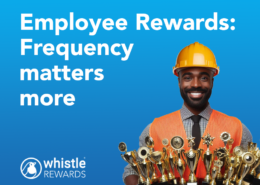 /wp-content/uploads/2024/08/FI-Employee-Rewards-frequency-matters-more.png 780 940 Drew Carter /wp-content/uploads/2024/12/Dk-Blue-Whistle-Rewards-Logo-with-Text-300x110.png Drew Carter2024-08-26 17:17:592024-09-12 15:02:07Employee Rewards: Frequency matters more
/wp-content/uploads/2024/08/FI-Employee-Rewards-frequency-matters-more.png 780 940 Drew Carter /wp-content/uploads/2024/12/Dk-Blue-Whistle-Rewards-Logo-with-Text-300x110.png Drew Carter2024-08-26 17:17:592024-09-12 15:02:07Employee Rewards: Frequency matters more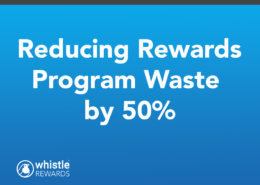 /wp-content/uploads/2024/08/FI-Case-Study-Reducing-Rewards-Program-Waste.png 780 940 Drew Carter /wp-content/uploads/2024/12/Dk-Blue-Whistle-Rewards-Logo-with-Text-300x110.png Drew Carter2024-08-23 21:20:102024-08-28 15:14:51Reducing reward waste by 50%
/wp-content/uploads/2024/08/FI-Case-Study-Reducing-Rewards-Program-Waste.png 780 940 Drew Carter /wp-content/uploads/2024/12/Dk-Blue-Whistle-Rewards-Logo-with-Text-300x110.png Drew Carter2024-08-23 21:20:102024-08-28 15:14:51Reducing reward waste by 50%
Whistle Rewards Selected to Join Google AI Academy for American Infrastructure

Why Rewarding Your Construction Staff Is More Than Just “Paying Twice”
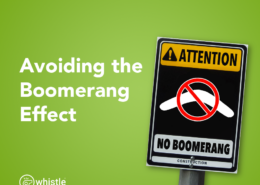
Behavioral Science in the Construction Industry: Avoiding the Boomerang Effect
 /wp-content/uploads/2024/08/FI-Case-Study-better-learning-incentives.png 780 940 Chris Dornfeld /wp-content/uploads/2024/12/Dk-Blue-Whistle-Rewards-Logo-with-Text-300x110.png Chris Dornfeld2024-07-27 16:32:192024-08-28 15:42:09Learning Incentives Save Time and Money
/wp-content/uploads/2024/08/FI-Case-Study-better-learning-incentives.png 780 940 Chris Dornfeld /wp-content/uploads/2024/12/Dk-Blue-Whistle-Rewards-Logo-with-Text-300x110.png Chris Dornfeld2024-07-27 16:32:192024-08-28 15:42:09Learning Incentives Save Time and Money
Whistle Rewards: BuiltWorlds 2024 Start-up Competition Winner!

Upload Funds To Your Whistle Rewards Account
 /wp-content/uploads/2024/07/FI-The-Ugly-Truth-about-Gift-Cards.png 780 940 Drew Carter /wp-content/uploads/2024/12/Dk-Blue-Whistle-Rewards-Logo-with-Text-300x110.png Drew Carter2024-07-14 19:01:272024-07-14 19:01:27The Ugly Truth About Gift Cards
/wp-content/uploads/2024/07/FI-The-Ugly-Truth-about-Gift-Cards.png 780 940 Drew Carter /wp-content/uploads/2024/12/Dk-Blue-Whistle-Rewards-Logo-with-Text-300x110.png Drew Carter2024-07-14 19:01:272024-07-14 19:01:27The Ugly Truth About Gift Cards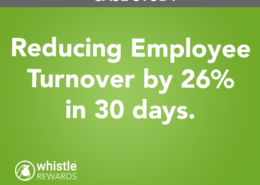
Reducing Employee Turnover by 26% in 30 Days
 /wp-content/uploads/2024/06/FI-Crowding-in-motivation.png 780 940 Chris Dornfeld /wp-content/uploads/2024/12/Dk-Blue-Whistle-Rewards-Logo-with-Text-300x110.png Chris Dornfeld2024-06-05 19:40:462024-06-05 19:40:46Crowding-in Motivation for Lasting Impact
/wp-content/uploads/2024/06/FI-Crowding-in-motivation.png 780 940 Chris Dornfeld /wp-content/uploads/2024/12/Dk-Blue-Whistle-Rewards-Logo-with-Text-300x110.png Chris Dornfeld2024-06-05 19:40:462024-06-05 19:40:46Crowding-in Motivation for Lasting Impact /wp-content/uploads/2024/04/FI-Incentives-avoiding-entitlement.png 780 940 Chris Dornfeld /wp-content/uploads/2024/12/Dk-Blue-Whistle-Rewards-Logo-with-Text-300x110.png Chris Dornfeld2024-04-17 22:20:382024-04-17 22:20:38Incentives: Avoiding Entitlement with these 3 steps
/wp-content/uploads/2024/04/FI-Incentives-avoiding-entitlement.png 780 940 Chris Dornfeld /wp-content/uploads/2024/12/Dk-Blue-Whistle-Rewards-Logo-with-Text-300x110.png Chris Dornfeld2024-04-17 22:20:382024-04-17 22:20:38Incentives: Avoiding Entitlement with these 3 steps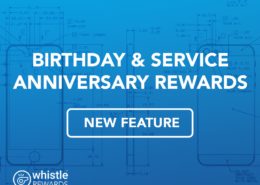 /wp-content/uploads/2024/04/FI-Birthday-and-Service-Anniversary-Rewards.png 780 940 Chris Dornfeld /wp-content/uploads/2024/12/Dk-Blue-Whistle-Rewards-Logo-with-Text-300x110.png Chris Dornfeld2024-04-11 20:45:052024-04-11 20:45:05Whistle’s New Birthday and Service Anniversary Rewards
/wp-content/uploads/2024/04/FI-Birthday-and-Service-Anniversary-Rewards.png 780 940 Chris Dornfeld /wp-content/uploads/2024/12/Dk-Blue-Whistle-Rewards-Logo-with-Text-300x110.png Chris Dornfeld2024-04-11 20:45:052024-04-11 20:45:05Whistle’s New Birthday and Service Anniversary Rewards /wp-content/uploads/2024/04/FI-5-concepts-shaping-whistle-rewards.png 780 940 Chris Dornfeld /wp-content/uploads/2024/12/Dk-Blue-Whistle-Rewards-Logo-with-Text-300x110.png Chris Dornfeld2024-04-02 20:33:482024-04-17 14:09:535 Concepts That Shape Whistle Rewards
/wp-content/uploads/2024/04/FI-5-concepts-shaping-whistle-rewards.png 780 940 Chris Dornfeld /wp-content/uploads/2024/12/Dk-Blue-Whistle-Rewards-Logo-with-Text-300x110.png Chris Dornfeld2024-04-02 20:33:482024-04-17 14:09:535 Concepts That Shape Whistle Rewards /wp-content/uploads/2024/04/FI-Cash-is-king.png 780 940 Chris Dornfeld /wp-content/uploads/2024/12/Dk-Blue-Whistle-Rewards-Logo-with-Text-300x110.png Chris Dornfeld2024-04-02 16:58:332024-04-02 16:58:33Why Cash is King for Construction Safety Incentives
/wp-content/uploads/2024/04/FI-Cash-is-king.png 780 940 Chris Dornfeld /wp-content/uploads/2024/12/Dk-Blue-Whistle-Rewards-Logo-with-Text-300x110.png Chris Dornfeld2024-04-02 16:58:332024-04-02 16:58:33Why Cash is King for Construction Safety Incentives /wp-content/uploads/2024/03/FI-How-To-Send-a-Spot-Reward-in-Procore.png 780 940 Chris Dornfeld /wp-content/uploads/2024/12/Dk-Blue-Whistle-Rewards-Logo-with-Text-300x110.png Chris Dornfeld2024-03-21 03:42:242024-06-14 15:33:38Send a Spot Reward in Procore
/wp-content/uploads/2024/03/FI-How-To-Send-a-Spot-Reward-in-Procore.png 780 940 Chris Dornfeld /wp-content/uploads/2024/12/Dk-Blue-Whistle-Rewards-Logo-with-Text-300x110.png Chris Dornfeld2024-03-21 03:42:242024-06-14 15:33:38Send a Spot Reward in Procore
Add Incentives to Procore Submittal Log to Boost Profitability and Safety.
 /wp-content/uploads/2024/02/FI-Combatting-Burnout-in-Healthcare.png 418 576 Chris Dornfeld /wp-content/uploads/2024/12/Dk-Blue-Whistle-Rewards-Logo-with-Text-300x110.png Chris Dornfeld2024-02-25 13:16:362024-02-25 13:18:55Combating Burnout in Healthcare with Rewards and Recognition
/wp-content/uploads/2024/02/FI-Combatting-Burnout-in-Healthcare.png 418 576 Chris Dornfeld /wp-content/uploads/2024/12/Dk-Blue-Whistle-Rewards-Logo-with-Text-300x110.png Chris Dornfeld2024-02-25 13:16:362024-02-25 13:18:55Combating Burnout in Healthcare with Rewards and Recognition /wp-content/uploads/2024/02/FI-harnessing-the-power-of-rewards-in-construction.png 418 576 Chris Dornfeld /wp-content/uploads/2024/12/Dk-Blue-Whistle-Rewards-Logo-with-Text-300x110.png Chris Dornfeld2024-02-24 00:43:172024-03-24 13:23:00Harnessing the Power of Timely Rewards in Construction
/wp-content/uploads/2024/02/FI-harnessing-the-power-of-rewards-in-construction.png 418 576 Chris Dornfeld /wp-content/uploads/2024/12/Dk-Blue-Whistle-Rewards-Logo-with-Text-300x110.png Chris Dornfeld2024-02-24 00:43:172024-03-24 13:23:00Harnessing the Power of Timely Rewards in Construction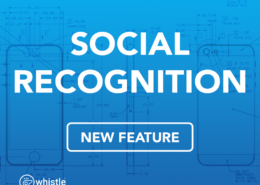 /wp-content/uploads/2024/02/FI-Social-Recognition.png 780 940 Chris Dornfeld /wp-content/uploads/2024/12/Dk-Blue-Whistle-Rewards-Logo-with-Text-300x110.png Chris Dornfeld2024-02-21 22:58:482024-02-24 00:50:53Whistle Reward’s New Recognition Tools
/wp-content/uploads/2024/02/FI-Social-Recognition.png 780 940 Chris Dornfeld /wp-content/uploads/2024/12/Dk-Blue-Whistle-Rewards-Logo-with-Text-300x110.png Chris Dornfeld2024-02-21 22:58:482024-02-24 00:50:53Whistle Reward’s New Recognition Tools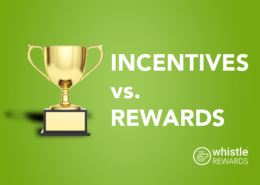 /wp-content/uploads/2024/04/FI-incentives-versus-rewards.png 780 940 Chris Dornfeld /wp-content/uploads/2024/12/Dk-Blue-Whistle-Rewards-Logo-with-Text-300x110.png Chris Dornfeld2024-02-03 20:42:142024-04-03 21:18:05Incentives versus Rewards
/wp-content/uploads/2024/04/FI-incentives-versus-rewards.png 780 940 Chris Dornfeld /wp-content/uploads/2024/12/Dk-Blue-Whistle-Rewards-Logo-with-Text-300x110.png Chris Dornfeld2024-02-03 20:42:142024-04-03 21:18:05Incentives versus Rewards /wp-content/uploads/2024/01/FI-FAQs.png 780 940 Chris Dornfeld /wp-content/uploads/2024/12/Dk-Blue-Whistle-Rewards-Logo-with-Text-300x110.png Chris Dornfeld2024-01-05 16:07:132024-03-29 15:15:13New Client Frequently Asked Questions
/wp-content/uploads/2024/01/FI-FAQs.png 780 940 Chris Dornfeld /wp-content/uploads/2024/12/Dk-Blue-Whistle-Rewards-Logo-with-Text-300x110.png Chris Dornfeld2024-01-05 16:07:132024-03-29 15:15:13New Client Frequently Asked Questions /wp-content/uploads/2024/01/FI-How-To-add-Whistle-Rewards-to-Procore.png 780 940 Chris Dornfeld /wp-content/uploads/2024/12/Dk-Blue-Whistle-Rewards-Logo-with-Text-300x110.png Chris Dornfeld2024-01-01 12:12:382024-04-03 22:08:43Add Whistle Rewards to your Procore Account
/wp-content/uploads/2024/01/FI-How-To-add-Whistle-Rewards-to-Procore.png 780 940 Chris Dornfeld /wp-content/uploads/2024/12/Dk-Blue-Whistle-Rewards-Logo-with-Text-300x110.png Chris Dornfeld2024-01-01 12:12:382024-04-03 22:08:43Add Whistle Rewards to your Procore Account /wp-content/uploads/2024/03/FI-How-To-Improve-Safety-Incedent-Reporting-in-Procore.png 780 940 Chris Dornfeld /wp-content/uploads/2024/12/Dk-Blue-Whistle-Rewards-Logo-with-Text-300x110.png Chris Dornfeld2023-12-15 16:43:012024-06-14 15:35:08Improving Safety Incident Reporting in Procore
/wp-content/uploads/2024/03/FI-How-To-Improve-Safety-Incedent-Reporting-in-Procore.png 780 940 Chris Dornfeld /wp-content/uploads/2024/12/Dk-Blue-Whistle-Rewards-Logo-with-Text-300x110.png Chris Dornfeld2023-12-15 16:43:012024-06-14 15:35:08Improving Safety Incident Reporting in Procore /wp-content/uploads/2023/11/Gratitude-w-title-narrower.png 450 583 Chris Dornfeld /wp-content/uploads/2024/12/Dk-Blue-Whistle-Rewards-Logo-with-Text-300x110.png Chris Dornfeld2023-11-19 01:44:372023-11-19 01:51:52Tis the Season to Be Jolly and Practice Gratitude
/wp-content/uploads/2023/11/Gratitude-w-title-narrower.png 450 583 Chris Dornfeld /wp-content/uploads/2024/12/Dk-Blue-Whistle-Rewards-Logo-with-Text-300x110.png Chris Dornfeld2023-11-19 01:44:372023-11-19 01:51:52Tis the Season to Be Jolly and Practice Gratitude
The Right Tool for the Job: Improving Construction Projects Using Rewards and Incentives
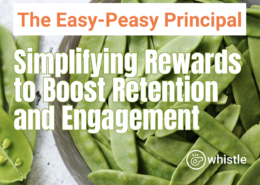 /wp-content/uploads/2023/10/Screenshot-2023-10-16-at-12.24.20-PM.png 950 1244 Chris Dornfeld /wp-content/uploads/2024/12/Dk-Blue-Whistle-Rewards-Logo-with-Text-300x110.png Chris Dornfeld2023-10-16 17:01:322023-10-16 17:01:32Simplifying Rewards to Boost Retention and Engagement
/wp-content/uploads/2023/10/Screenshot-2023-10-16-at-12.24.20-PM.png 950 1244 Chris Dornfeld /wp-content/uploads/2024/12/Dk-Blue-Whistle-Rewards-Logo-with-Text-300x110.png Chris Dornfeld2023-10-16 17:01:322023-10-16 17:01:32Simplifying Rewards to Boost Retention and Engagement
Building Great Cultures in a Post-Pandemic Era of Hybrid Work and Rapidly Changing Technology

The Irrefutable Carrot Conundrum: Why Positive Reinforcement Triumphs in the Workplace

The Carrot Chronicles: 12 Commandments of Influential Employee Rewards and Recognition
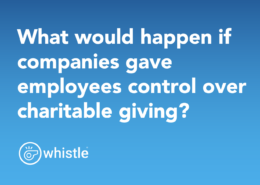 /wp-content/uploads/2023/08/Screenshot-2023-08-21-at-5.56.59-PM.png 984 1372 Chris Dornfeld /wp-content/uploads/2024/12/Dk-Blue-Whistle-Rewards-Logo-with-Text-300x110.png Chris Dornfeld2023-08-21 20:51:222023-08-21 22:59:27Creating Employee Loyalty with Corporate Philanthropy
/wp-content/uploads/2023/08/Screenshot-2023-08-21-at-5.56.59-PM.png 984 1372 Chris Dornfeld /wp-content/uploads/2024/12/Dk-Blue-Whistle-Rewards-Logo-with-Text-300x110.png Chris Dornfeld2023-08-21 20:51:222023-08-21 22:59:27Creating Employee Loyalty with Corporate Philanthropy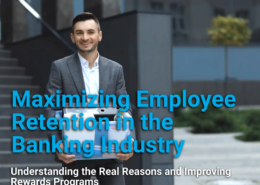 /wp-content/uploads/2023/07/Screenshot-2023-07-14-at-10.34.33-AM-1.png 702 877 Drew Carter /wp-content/uploads/2024/12/Dk-Blue-Whistle-Rewards-Logo-with-Text-300x110.png Drew Carter2023-07-14 15:13:002023-07-14 16:16:50Maximizing Employee Retention in the Banking Industry
/wp-content/uploads/2023/07/Screenshot-2023-07-14-at-10.34.33-AM-1.png 702 877 Drew Carter /wp-content/uploads/2024/12/Dk-Blue-Whistle-Rewards-Logo-with-Text-300x110.png Drew Carter2023-07-14 15:13:002023-07-14 16:16:50Maximizing Employee Retention in the Banking Industry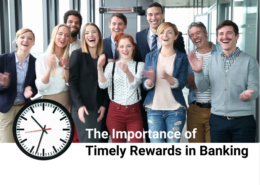 /wp-content/uploads/2023/07/Screenshot-2023-07-13-at-10.57.02-AM.png 498 622 Chris Dornfeld /wp-content/uploads/2024/12/Dk-Blue-Whistle-Rewards-Logo-with-Text-300x110.png Chris Dornfeld2023-07-13 15:33:292023-07-13 16:00:14The Importance of Timely Rewards in the Banking Industry
/wp-content/uploads/2023/07/Screenshot-2023-07-13-at-10.57.02-AM.png 498 622 Chris Dornfeld /wp-content/uploads/2024/12/Dk-Blue-Whistle-Rewards-Logo-with-Text-300x110.png Chris Dornfeld2023-07-13 15:33:292023-07-13 16:00:14The Importance of Timely Rewards in the Banking Industry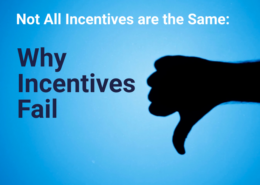 /wp-content/uploads/2023/07/Screenshot-2023-07-13-at-11.01.25-AM.png 550 688 Drew Carter /wp-content/uploads/2024/12/Dk-Blue-Whistle-Rewards-Logo-with-Text-300x110.png Drew Carter2023-07-13 02:20:122023-07-13 16:04:03Why Incentives Fail
/wp-content/uploads/2023/07/Screenshot-2023-07-13-at-11.01.25-AM.png 550 688 Drew Carter /wp-content/uploads/2024/12/Dk-Blue-Whistle-Rewards-Logo-with-Text-300x110.png Drew Carter2023-07-13 02:20:122023-07-13 16:04:03Why Incentives Fail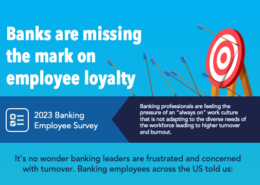 /wp-content/uploads/2023/06/FI-Bank-are-missing-the-mark.png 359 540 Chris Dornfeld /wp-content/uploads/2024/12/Dk-Blue-Whistle-Rewards-Logo-with-Text-300x110.png Chris Dornfeld2023-06-14 02:29:452023-06-14 02:40:35Banks are missing the mark on employee loyalty
/wp-content/uploads/2023/06/FI-Bank-are-missing-the-mark.png 359 540 Chris Dornfeld /wp-content/uploads/2024/12/Dk-Blue-Whistle-Rewards-Logo-with-Text-300x110.png Chris Dornfeld2023-06-14 02:29:452023-06-14 02:40:35Banks are missing the mark on employee loyalty /wp-content/uploads/2023/05/Custom-dimensions-1600x900-px-Custom-dimensions.jpeg 1440 1880 Chris Dornfeld /wp-content/uploads/2024/12/Dk-Blue-Whistle-Rewards-Logo-with-Text-300x110.png Chris Dornfeld2023-05-11 16:41:062023-05-11 16:42:14Making Employee Retention Personal: Meaning
/wp-content/uploads/2023/05/Custom-dimensions-1600x900-px-Custom-dimensions.jpeg 1440 1880 Chris Dornfeld /wp-content/uploads/2024/12/Dk-Blue-Whistle-Rewards-Logo-with-Text-300x110.png Chris Dornfeld2023-05-11 16:41:062023-05-11 16:42:14Making Employee Retention Personal: Meaning /wp-content/uploads/2022/08/FI-the-5-pitfalls-of-corporate-gift-cards.png 780 940 Drew Carter /wp-content/uploads/2024/12/Dk-Blue-Whistle-Rewards-Logo-with-Text-300x110.png Drew Carter2023-04-27 21:19:432023-05-03 16:32:51The 5 Pitfalls of Corporate Gift Cards
/wp-content/uploads/2022/08/FI-the-5-pitfalls-of-corporate-gift-cards.png 780 940 Drew Carter /wp-content/uploads/2024/12/Dk-Blue-Whistle-Rewards-Logo-with-Text-300x110.png Drew Carter2023-04-27 21:19:432023-05-03 16:32:51The 5 Pitfalls of Corporate Gift Cards
SMS Text Feature makes Whistle the easiest employee payments and reward tool ever

The Importance of Aligning Company Values with Business Trajectory

The Importance of Measuring Gender Inclusivity in the Workplace

Creating a Sense of Belonging For your Employees
 /wp-content/uploads/2023/03/Custom-dimensions-80x80-px-Logo-Custom-dimensions.jpeg 740 920 Chris Dornfeld /wp-content/uploads/2024/12/Dk-Blue-Whistle-Rewards-Logo-with-Text-300x110.png Chris Dornfeld2023-03-06 19:01:362023-03-06 19:05:36BankTalentHQ Announces Partnership with Whistle
/wp-content/uploads/2023/03/Custom-dimensions-80x80-px-Logo-Custom-dimensions.jpeg 740 920 Chris Dornfeld /wp-content/uploads/2024/12/Dk-Blue-Whistle-Rewards-Logo-with-Text-300x110.png Chris Dornfeld2023-03-06 19:01:362023-03-06 19:05:36BankTalentHQ Announces Partnership with Whistle
Making Employee Retention Personal: Belonging
 /wp-content/uploads/2024/12/Dk-Blue-Whistle-Rewards-Logo-with-Text-300x110.png 0 0 Chris Dornfeld /wp-content/uploads/2024/12/Dk-Blue-Whistle-Rewards-Logo-with-Text-300x110.png Chris Dornfeld2023-03-05 15:47:262024-03-06 21:56:48Requesting a Physical Card
/wp-content/uploads/2024/12/Dk-Blue-Whistle-Rewards-Logo-with-Text-300x110.png 0 0 Chris Dornfeld /wp-content/uploads/2024/12/Dk-Blue-Whistle-Rewards-Logo-with-Text-300x110.png Chris Dornfeld2023-03-05 15:47:262024-03-06 21:56:48Requesting a Physical Card
Employee Engagement in the Multigenerational Workplace
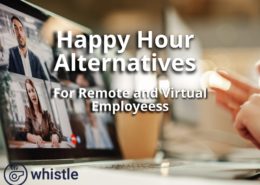
Great alternatives to happy hour for remote and virtual employees.
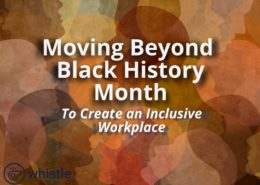
Moving Beyond Black History Month to Create an Inclusive Workplace
 /wp-content/uploads/2023/02/Building-Inclusion-and-Belonging-with-Whistle-Graphic.png 300 300 Chris Dornfeld /wp-content/uploads/2024/12/Dk-Blue-Whistle-Rewards-Logo-with-Text-300x110.png Chris Dornfeld2023-02-17 00:19:452023-02-17 02:57:47Building Inclusion and Belonging with Whistle
/wp-content/uploads/2023/02/Building-Inclusion-and-Belonging-with-Whistle-Graphic.png 300 300 Chris Dornfeld /wp-content/uploads/2024/12/Dk-Blue-Whistle-Rewards-Logo-with-Text-300x110.png Chris Dornfeld2023-02-17 00:19:452023-02-17 02:57:47Building Inclusion and Belonging with Whistle
The Importance of Creating a Personalized Employee Experience – Feeling Valued

Most Leaders Focus On The Wrong Retention Problems.

Keep Your Virtual Employee Engaged During the Long Winter
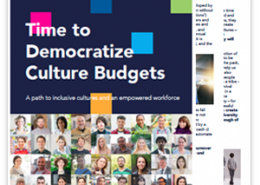 /wp-content/uploads/2023/02/Time-to-democratize-culture-cover.png 300 300 Chris Dornfeld /wp-content/uploads/2024/12/Dk-Blue-Whistle-Rewards-Logo-with-Text-300x110.png Chris Dornfeld2023-02-03 19:43:482023-03-22 15:59:16Time to Democratize Culture Budgets
/wp-content/uploads/2023/02/Time-to-democratize-culture-cover.png 300 300 Chris Dornfeld /wp-content/uploads/2024/12/Dk-Blue-Whistle-Rewards-Logo-with-Text-300x110.png Chris Dornfeld2023-02-03 19:43:482023-03-22 15:59:16Time to Democratize Culture Budgets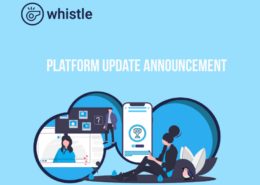 /wp-content/uploads/2023/01/Custom-dimensions920-x740px-Custom-dimensions-Custom-dimensions-Custom-dimensions.jpeg 740 920 Chris Dornfeld /wp-content/uploads/2024/12/Dk-Blue-Whistle-Rewards-Logo-with-Text-300x110.png Chris Dornfeld2023-01-27 22:16:412023-02-05 18:48:55Whistle System Platform Updates January 2023
/wp-content/uploads/2023/01/Custom-dimensions920-x740px-Custom-dimensions-Custom-dimensions-Custom-dimensions.jpeg 740 920 Chris Dornfeld /wp-content/uploads/2024/12/Dk-Blue-Whistle-Rewards-Logo-with-Text-300x110.png Chris Dornfeld2023-01-27 22:16:412023-02-05 18:48:55Whistle System Platform Updates January 2023
The importance of creating a personalized employee experience: Growth and Mastery

The importance of creating a personalized employee experience: Expectation and Capabilities
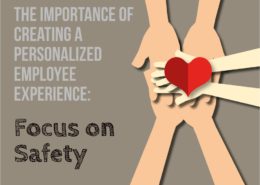
The importance of creating a personalized employee experience: Focus on Safety

Creating a personalized employee experience can help improve retention and loyalty

KNOWING WHERE TO INVEST YOUR CULTURE DOLLARS TO IMPROVE LOYALTY SHOULD BE YOUR #1 PRIORITY
 /wp-content/uploads/2022/12/FI-Largely.png 780 940 Chris Dornfeld /wp-content/uploads/2024/12/Dk-Blue-Whistle-Rewards-Logo-with-Text-300x110.png Chris Dornfeld2022-12-13 11:23:192024-02-15 16:07:23Whistle partners with Largely, the Candidate & Employee Experience Platform
/wp-content/uploads/2022/12/FI-Largely.png 780 940 Chris Dornfeld /wp-content/uploads/2024/12/Dk-Blue-Whistle-Rewards-Logo-with-Text-300x110.png Chris Dornfeld2022-12-13 11:23:192024-02-15 16:07:23Whistle partners with Largely, the Candidate & Employee Experience Platform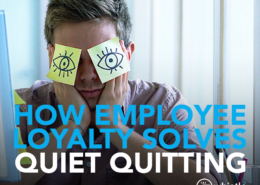 /wp-content/uploads/2022/12/FI-Quiet-Quitting.png 780 940 Chris Dornfeld /wp-content/uploads/2024/12/Dk-Blue-Whistle-Rewards-Logo-with-Text-300x110.png Chris Dornfeld2022-12-08 04:38:142022-12-11 19:31:52HOW EMPLOYEE LOYALTY SOLVES QUIET QUITTING
/wp-content/uploads/2022/12/FI-Quiet-Quitting.png 780 940 Chris Dornfeld /wp-content/uploads/2024/12/Dk-Blue-Whistle-Rewards-Logo-with-Text-300x110.png Chris Dornfeld2022-12-08 04:38:142022-12-11 19:31:52HOW EMPLOYEE LOYALTY SOLVES QUIET QUITTING /wp-content/uploads/2022/12/FI-Magic-Links-Whistle-App.png 780 940 Chris Dornfeld /wp-content/uploads/2024/12/Dk-Blue-Whistle-Rewards-Logo-with-Text-300x110.png Chris Dornfeld2022-12-02 22:23:482022-12-05 22:08:03Magic Links – New Whistle Feature
/wp-content/uploads/2022/12/FI-Magic-Links-Whistle-App.png 780 940 Chris Dornfeld /wp-content/uploads/2024/12/Dk-Blue-Whistle-Rewards-Logo-with-Text-300x110.png Chris Dornfeld2022-12-02 22:23:482022-12-05 22:08:03Magic Links – New Whistle Feature /wp-content/uploads/2022/12/FI-employee-loyalty-holiday-gift-ideas.png 900 1200 Chris Dornfeld /wp-content/uploads/2024/12/Dk-Blue-Whistle-Rewards-Logo-with-Text-300x110.png Chris Dornfeld2022-12-02 15:40:532022-12-02 19:09:32HOLIDAY GIFT AND PARTY IDEAS THAT DRIVE EMPLOYEE LOYALTY
/wp-content/uploads/2022/12/FI-employee-loyalty-holiday-gift-ideas.png 900 1200 Chris Dornfeld /wp-content/uploads/2024/12/Dk-Blue-Whistle-Rewards-Logo-with-Text-300x110.png Chris Dornfeld2022-12-02 15:40:532022-12-02 19:09:32HOLIDAY GIFT AND PARTY IDEAS THAT DRIVE EMPLOYEE LOYALTY /wp-content/uploads/2022/12/Jennifer-Ernst-Employee-Loyalty-Leader.png 900 1200 Chris Dornfeld /wp-content/uploads/2024/12/Dk-Blue-Whistle-Rewards-Logo-with-Text-300x110.png Chris Dornfeld2022-12-01 23:10:012022-12-02 17:55:29Employee Loyalty Leader Jennifer Ernst
/wp-content/uploads/2022/12/Jennifer-Ernst-Employee-Loyalty-Leader.png 900 1200 Chris Dornfeld /wp-content/uploads/2024/12/Dk-Blue-Whistle-Rewards-Logo-with-Text-300x110.png Chris Dornfeld2022-12-01 23:10:012022-12-02 17:55:29Employee Loyalty Leader Jennifer Ernst /wp-content/uploads/2022/11/Employee-Loyalty-Definition-FI-1.jpg 780 940 Ben Valenti /wp-content/uploads/2024/12/Dk-Blue-Whistle-Rewards-Logo-with-Text-300x110.png Ben Valenti2022-11-10 22:57:252022-11-11 00:42:25Employee Loyalty Definition
/wp-content/uploads/2022/11/Employee-Loyalty-Definition-FI-1.jpg 780 940 Ben Valenti /wp-content/uploads/2024/12/Dk-Blue-Whistle-Rewards-Logo-with-Text-300x110.png Ben Valenti2022-11-10 22:57:252022-11-11 00:42:25Employee Loyalty Definition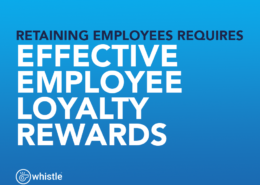
Effective Employee Loyalty Rewards Are Required to Retain Employees
 /wp-content/uploads/2022/09/Metrics-FI.png 780 940 Ben Valenti /wp-content/uploads/2024/12/Dk-Blue-Whistle-Rewards-Logo-with-Text-300x110.png Ben Valenti2022-09-22 20:55:162022-09-23 16:30:38Metrics – New Feature
/wp-content/uploads/2022/09/Metrics-FI.png 780 940 Ben Valenti /wp-content/uploads/2024/12/Dk-Blue-Whistle-Rewards-Logo-with-Text-300x110.png Ben Valenti2022-09-22 20:55:162022-09-23 16:30:38Metrics – New Feature /wp-content/uploads/2022/09/Whitney-Kenter.png 780 940 Chris Dornfeld /wp-content/uploads/2024/12/Dk-Blue-Whistle-Rewards-Logo-with-Text-300x110.png Chris Dornfeld2022-09-20 01:43:072022-09-21 17:03:55Employee Loyalty Leaders with Whitney Kenter
/wp-content/uploads/2022/09/Whitney-Kenter.png 780 940 Chris Dornfeld /wp-content/uploads/2024/12/Dk-Blue-Whistle-Rewards-Logo-with-Text-300x110.png Chris Dornfeld2022-09-20 01:43:072022-09-21 17:03:55Employee Loyalty Leaders with Whitney Kenter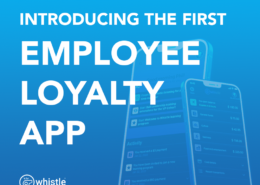 /wp-content/uploads/2022/09/The-first-employee-loyalty-app.png 780 940 Chris Dornfeld /wp-content/uploads/2024/12/Dk-Blue-Whistle-Rewards-Logo-with-Text-300x110.png Chris Dornfeld2022-09-13 04:52:092022-09-13 05:39:544 Key Elements of an Employee Loyalty App
/wp-content/uploads/2022/09/The-first-employee-loyalty-app.png 780 940 Chris Dornfeld /wp-content/uploads/2024/12/Dk-Blue-Whistle-Rewards-Logo-with-Text-300x110.png Chris Dornfeld2022-09-13 04:52:092022-09-13 05:39:544 Key Elements of an Employee Loyalty App /wp-content/uploads/2022/09/FI-ELL-David-Klein.png 780 940 Chris Dornfeld /wp-content/uploads/2024/12/Dk-Blue-Whistle-Rewards-Logo-with-Text-300x110.png Chris Dornfeld2022-09-01 19:19:292022-09-30 17:00:27Employee Loyalty Leaders with David Klein
/wp-content/uploads/2022/09/FI-ELL-David-Klein.png 780 940 Chris Dornfeld /wp-content/uploads/2024/12/Dk-Blue-Whistle-Rewards-Logo-with-Text-300x110.png Chris Dornfeld2022-09-01 19:19:292022-09-30 17:00:27Employee Loyalty Leaders with David Klein /wp-content/uploads/2022/08/FI-Challenges-with-employee-onboarding.png 780 940 Chris Dornfeld /wp-content/uploads/2024/12/Dk-Blue-Whistle-Rewards-Logo-with-Text-300x110.png Chris Dornfeld2022-08-23 21:02:002022-08-24 14:24:22Challenges with Employee Onboarding (and How to Solve Them)
/wp-content/uploads/2022/08/FI-Challenges-with-employee-onboarding.png 780 940 Chris Dornfeld /wp-content/uploads/2024/12/Dk-Blue-Whistle-Rewards-Logo-with-Text-300x110.png Chris Dornfeld2022-08-23 21:02:002022-08-24 14:24:22Challenges with Employee Onboarding (and How to Solve Them)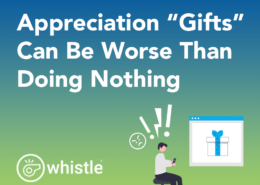 /wp-content/uploads/2022/08/FI-Appreciation-Gifts.png 780 940 Ben Valenti /wp-content/uploads/2024/12/Dk-Blue-Whistle-Rewards-Logo-with-Text-300x110.png Ben Valenti2022-08-18 01:05:102022-08-18 19:36:50Employee Appreciation “Gifts” Can Be Worse Than Doing Nothing
/wp-content/uploads/2022/08/FI-Appreciation-Gifts.png 780 940 Ben Valenti /wp-content/uploads/2024/12/Dk-Blue-Whistle-Rewards-Logo-with-Text-300x110.png Ben Valenti2022-08-18 01:05:102022-08-18 19:36:50Employee Appreciation “Gifts” Can Be Worse Than Doing Nothing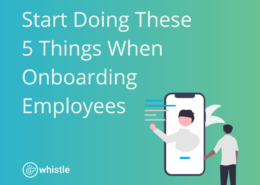 /wp-content/uploads/2022/08/Whistle-5-Onboarding-Things_thumbnail.png 780 940 Chris Dornfeld /wp-content/uploads/2024/12/Dk-Blue-Whistle-Rewards-Logo-with-Text-300x110.png Chris Dornfeld2022-08-16 16:10:442022-08-16 21:50:30Start Doing These 5 Things When Onboarding New Employees
/wp-content/uploads/2022/08/Whistle-5-Onboarding-Things_thumbnail.png 780 940 Chris Dornfeld /wp-content/uploads/2024/12/Dk-Blue-Whistle-Rewards-Logo-with-Text-300x110.png Chris Dornfeld2022-08-16 16:10:442022-08-16 21:50:30Start Doing These 5 Things When Onboarding New Employees /wp-content/uploads/2022/07/FI-Employee-Loyalty-Katie-Harman.png 780 940 Chris Dornfeld /wp-content/uploads/2024/12/Dk-Blue-Whistle-Rewards-Logo-with-Text-300x110.png Chris Dornfeld2022-08-08 13:52:042022-09-30 17:01:36Employee Loyalty Leaders with Katie Harman
/wp-content/uploads/2022/07/FI-Employee-Loyalty-Katie-Harman.png 780 940 Chris Dornfeld /wp-content/uploads/2024/12/Dk-Blue-Whistle-Rewards-Logo-with-Text-300x110.png Chris Dornfeld2022-08-08 13:52:042022-09-30 17:01:36Employee Loyalty Leaders with Katie Harman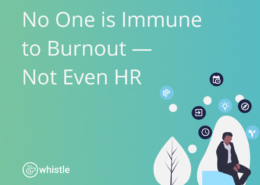 /wp-content/uploads/2022/08/Whistle-Blog_Burnout_940x780-1.png 780 940 Chris Dornfeld /wp-content/uploads/2024/12/Dk-Blue-Whistle-Rewards-Logo-with-Text-300x110.png Chris Dornfeld2022-08-04 22:57:272022-08-05 02:03:24No One is Immune to Employee Burnout — Not Even HR
/wp-content/uploads/2022/08/Whistle-Blog_Burnout_940x780-1.png 780 940 Chris Dornfeld /wp-content/uploads/2024/12/Dk-Blue-Whistle-Rewards-Logo-with-Text-300x110.png Chris Dornfeld2022-08-04 22:57:272022-08-05 02:03:24No One is Immune to Employee Burnout — Not Even HR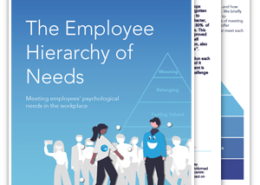 /wp-content/uploads/2022/07/employee-hierarchy-of-needs.png 300 300 Chris Dornfeld /wp-content/uploads/2024/12/Dk-Blue-Whistle-Rewards-Logo-with-Text-300x110.png Chris Dornfeld2022-07-25 18:08:332022-11-07 21:54:25The Employee Hierarchy of Needs
/wp-content/uploads/2022/07/employee-hierarchy-of-needs.png 300 300 Chris Dornfeld /wp-content/uploads/2024/12/Dk-Blue-Whistle-Rewards-Logo-with-Text-300x110.png Chris Dornfeld2022-07-25 18:08:332022-11-07 21:54:25The Employee Hierarchy of Needs /wp-content/uploads/2022/07/FI-Jennifer-Patterson.png 780 940 Chris Dornfeld /wp-content/uploads/2024/12/Dk-Blue-Whistle-Rewards-Logo-with-Text-300x110.png Chris Dornfeld2022-07-08 14:23:382022-09-30 17:02:42Employee Loyalty Leaders with Jennifer Patterson
/wp-content/uploads/2022/07/FI-Jennifer-Patterson.png 780 940 Chris Dornfeld /wp-content/uploads/2024/12/Dk-Blue-Whistle-Rewards-Logo-with-Text-300x110.png Chris Dornfeld2022-07-08 14:23:382022-09-30 17:02:42Employee Loyalty Leaders with Jennifer Patterson /wp-content/uploads/2022/06/FI-Rob-Seay.png 780 940 Chris Dornfeld /wp-content/uploads/2024/12/Dk-Blue-Whistle-Rewards-Logo-with-Text-300x110.png Chris Dornfeld2022-06-21 17:56:012022-09-30 17:03:48Employee Loyalty Leaders with Rob Seay
/wp-content/uploads/2022/06/FI-Rob-Seay.png 780 940 Chris Dornfeld /wp-content/uploads/2024/12/Dk-Blue-Whistle-Rewards-Logo-with-Text-300x110.png Chris Dornfeld2022-06-21 17:56:012022-09-30 17:03:48Employee Loyalty Leaders with Rob Seay /wp-content/uploads/2022/06/FI-New-Feature-Slack-Integration.png 780 940 Ben Valenti /wp-content/uploads/2024/12/Dk-Blue-Whistle-Rewards-Logo-with-Text-300x110.png Ben Valenti2022-06-01 21:31:492023-04-07 18:32:37New Feature – Slack Integration
/wp-content/uploads/2022/06/FI-New-Feature-Slack-Integration.png 780 940 Ben Valenti /wp-content/uploads/2024/12/Dk-Blue-Whistle-Rewards-Logo-with-Text-300x110.png Ben Valenti2022-06-01 21:31:492023-04-07 18:32:37New Feature – Slack Integration /wp-content/uploads/2022/05/FI-150B-industry.png 780 940 Ben Valenti /wp-content/uploads/2024/12/Dk-Blue-Whistle-Rewards-Logo-with-Text-300x110.png Ben Valenti2022-05-27 19:44:302022-05-27 20:45:03The $150 Billion Industry No One Likes
/wp-content/uploads/2022/05/FI-150B-industry.png 780 940 Ben Valenti /wp-content/uploads/2024/12/Dk-Blue-Whistle-Rewards-Logo-with-Text-300x110.png Ben Valenti2022-05-27 19:44:302022-05-27 20:45:03The $150 Billion Industry No One Likes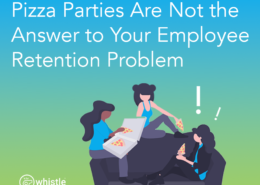
Pizza Parties Are Not the Answer to Your Retention Problems
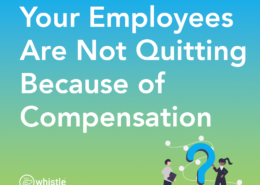
Your Employees Are Not Quitting Because of Compensation
 /wp-content/uploads/2022/03/Press-Release-1.png 780 940 Chris Dornfeld /wp-content/uploads/2024/12/Dk-Blue-Whistle-Rewards-Logo-with-Text-300x110.png Chris Dornfeld2022-03-01 16:35:112022-03-13 16:56:42Whistle Closes on $3.2 Million Seed Funding Round
/wp-content/uploads/2022/03/Press-Release-1.png 780 940 Chris Dornfeld /wp-content/uploads/2024/12/Dk-Blue-Whistle-Rewards-Logo-with-Text-300x110.png Chris Dornfeld2022-03-01 16:35:112022-03-13 16:56:42Whistle Closes on $3.2 Million Seed Funding Round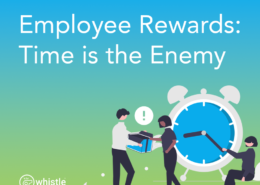 /wp-content/uploads/2022/01/FI-Time-is-the-enemy.png 780 940 Drew Carter /wp-content/uploads/2024/12/Dk-Blue-Whistle-Rewards-Logo-with-Text-300x110.png Drew Carter2022-01-31 19:47:552022-02-01 20:06:42Employee Rewards: Time is the Enemy
/wp-content/uploads/2022/01/FI-Time-is-the-enemy.png 780 940 Drew Carter /wp-content/uploads/2024/12/Dk-Blue-Whistle-Rewards-Logo-with-Text-300x110.png Drew Carter2022-01-31 19:47:552022-02-01 20:06:42Employee Rewards: Time is the Enemy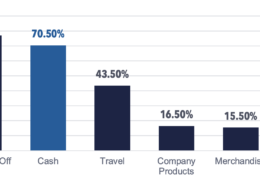 /wp-content/uploads/2022/01/Screenshot-2023-06-12-at-10.07.28-PM.png 780 1854 Chris Dornfeld /wp-content/uploads/2024/12/Dk-Blue-Whistle-Rewards-Logo-with-Text-300x110.png Chris Dornfeld2022-01-13 02:39:222023-06-13 03:15:49Data and Articles on Employee Loyalty in Banking
/wp-content/uploads/2022/01/Screenshot-2023-06-12-at-10.07.28-PM.png 780 1854 Chris Dornfeld /wp-content/uploads/2024/12/Dk-Blue-Whistle-Rewards-Logo-with-Text-300x110.png Chris Dornfeld2022-01-13 02:39:222023-06-13 03:15:49Data and Articles on Employee Loyalty in Banking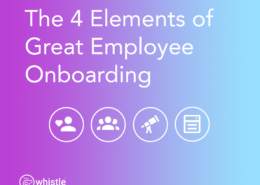 /wp-content/uploads/2021/11/4-elements-of-onboarding.png 780 940 Chris Dornfeld /wp-content/uploads/2024/12/Dk-Blue-Whistle-Rewards-Logo-with-Text-300x110.png Chris Dornfeld2021-11-13 14:36:442022-09-13 05:42:48The 4 Elements of Great Employee Onboarding
/wp-content/uploads/2021/11/4-elements-of-onboarding.png 780 940 Chris Dornfeld /wp-content/uploads/2024/12/Dk-Blue-Whistle-Rewards-Logo-with-Text-300x110.png Chris Dornfeld2021-11-13 14:36:442022-09-13 05:42:48The 4 Elements of Great Employee Onboarding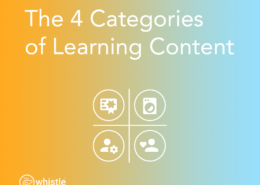 /wp-content/uploads/2021/11/fi-4-categories-of-learning-content.png 780 940 Chris Dornfeld /wp-content/uploads/2024/12/Dk-Blue-Whistle-Rewards-Logo-with-Text-300x110.png Chris Dornfeld2021-11-09 03:57:252021-11-09 19:46:05The 4 Categories of Learning Content
/wp-content/uploads/2021/11/fi-4-categories-of-learning-content.png 780 940 Chris Dornfeld /wp-content/uploads/2024/12/Dk-Blue-Whistle-Rewards-Logo-with-Text-300x110.png Chris Dornfeld2021-11-09 03:57:252021-11-09 19:46:05The 4 Categories of Learning Content /wp-content/uploads/2021/10/fi-microlearning-best-practices.png 780 940 Ben Valenti /wp-content/uploads/2024/12/Dk-Blue-Whistle-Rewards-Logo-with-Text-300x110.png Ben Valenti2021-10-14 18:00:142021-10-14 22:00:545 Microlearning Best Practices
/wp-content/uploads/2021/10/fi-microlearning-best-practices.png 780 940 Ben Valenti /wp-content/uploads/2024/12/Dk-Blue-Whistle-Rewards-Logo-with-Text-300x110.png Ben Valenti2021-10-14 18:00:142021-10-14 22:00:545 Microlearning Best Practices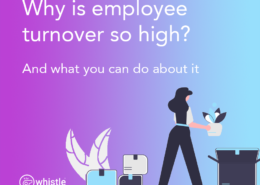 /wp-content/uploads/2021/10/FI-Employee-Turnover-so-high.png 780 940 Chris Dornfeld /wp-content/uploads/2024/12/Dk-Blue-Whistle-Rewards-Logo-with-Text-300x110.png Chris Dornfeld2021-10-13 18:17:522021-10-14 22:02:14Employee turnover is at an all time high
/wp-content/uploads/2021/10/FI-Employee-Turnover-so-high.png 780 940 Chris Dornfeld /wp-content/uploads/2024/12/Dk-Blue-Whistle-Rewards-Logo-with-Text-300x110.png Chris Dornfeld2021-10-13 18:17:522021-10-14 22:02:14Employee turnover is at an all time high
The hidden risk of diversity training, and what you should do about it

Manager training is costing you millions, and you don’t even know it
 /wp-content/uploads/2021/08/FI-Understanding-and-addressing-turnover.png 780 940 Drew Carter /wp-content/uploads/2024/12/Dk-Blue-Whistle-Rewards-Logo-with-Text-300x110.png Drew Carter2021-08-21 14:17:202021-11-28 20:02:51Understanding and Addressing Turnover in Manufacturing
/wp-content/uploads/2021/08/FI-Understanding-and-addressing-turnover.png 780 940 Drew Carter /wp-content/uploads/2024/12/Dk-Blue-Whistle-Rewards-Logo-with-Text-300x110.png Drew Carter2021-08-21 14:17:202021-11-28 20:02:51Understanding and Addressing Turnover in Manufacturing /wp-content/uploads/2021/08/FI-What-is-Microlearning-2.png 780 940 Chris Dornfeld /wp-content/uploads/2024/12/Dk-Blue-Whistle-Rewards-Logo-with-Text-300x110.png Chris Dornfeld2021-08-20 04:07:582021-09-22 14:25:12What is Microlearning? (And what are the benefits?)
/wp-content/uploads/2021/08/FI-What-is-Microlearning-2.png 780 940 Chris Dornfeld /wp-content/uploads/2024/12/Dk-Blue-Whistle-Rewards-Logo-with-Text-300x110.png Chris Dornfeld2021-08-20 04:07:582021-09-22 14:25:12What is Microlearning? (And what are the benefits?) /wp-content/uploads/2021/04/channel-learning-is-broken-whitepaper-cover.png 300 300 Chris Dornfeld /wp-content/uploads/2024/12/Dk-Blue-Whistle-Rewards-Logo-with-Text-300x110.png Chris Dornfeld2021-05-14 20:25:472024-01-11 21:55:12Channel Learning is Broken, and Microlearning Can Fix It
/wp-content/uploads/2021/04/channel-learning-is-broken-whitepaper-cover.png 300 300 Chris Dornfeld /wp-content/uploads/2024/12/Dk-Blue-Whistle-Rewards-Logo-with-Text-300x110.png Chris Dornfeld2021-05-14 20:25:472024-01-11 21:55:12Channel Learning is Broken, and Microlearning Can Fix It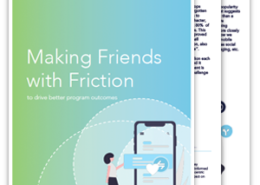 /wp-content/uploads/2021/05/making-friends-with-friction-cover.png 300 300 Drew Carter /wp-content/uploads/2024/12/Dk-Blue-Whistle-Rewards-Logo-with-Text-300x110.png Drew Carter2021-03-05 08:50:002024-01-11 21:54:47Making Friends with Friction
/wp-content/uploads/2021/05/making-friends-with-friction-cover.png 300 300 Drew Carter /wp-content/uploads/2024/12/Dk-Blue-Whistle-Rewards-Logo-with-Text-300x110.png Drew Carter2021-03-05 08:50:002024-01-11 21:54:47Making Friends with Friction /wp-content/uploads/2021/03/microlearning-banner.png 480 1440 Chris Dornfeld /wp-content/uploads/2024/12/Dk-Blue-Whistle-Rewards-Logo-with-Text-300x110.png Chris Dornfeld2021-03-01 20:50:552022-12-08 05:03:45How Microlearning Will Transform the Sales Channel
/wp-content/uploads/2021/03/microlearning-banner.png 480 1440 Chris Dornfeld /wp-content/uploads/2024/12/Dk-Blue-Whistle-Rewards-Logo-with-Text-300x110.png Chris Dornfeld2021-03-01 20:50:552022-12-08 05:03:45How Microlearning Will Transform the Sales Channel







